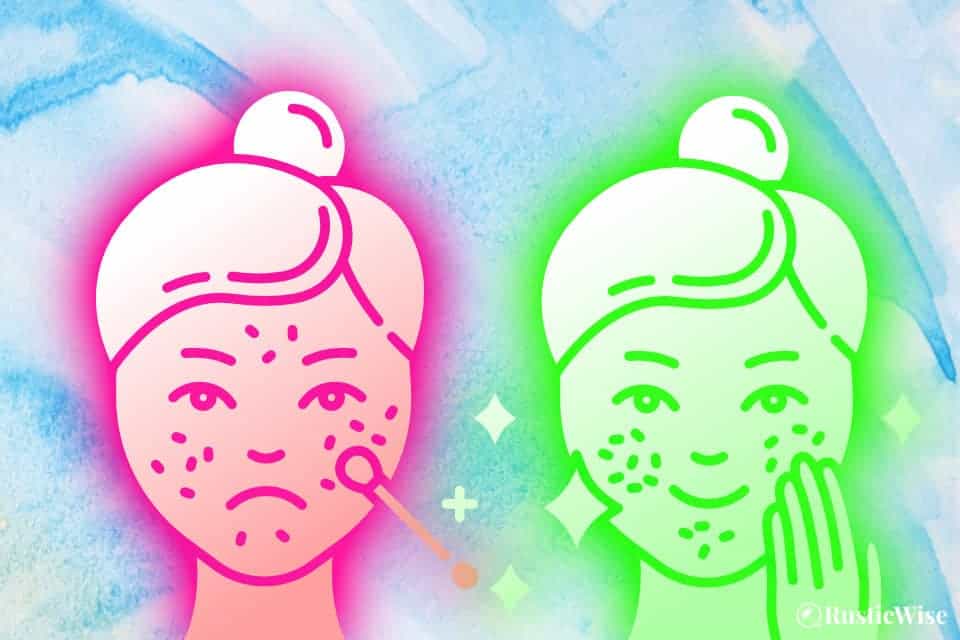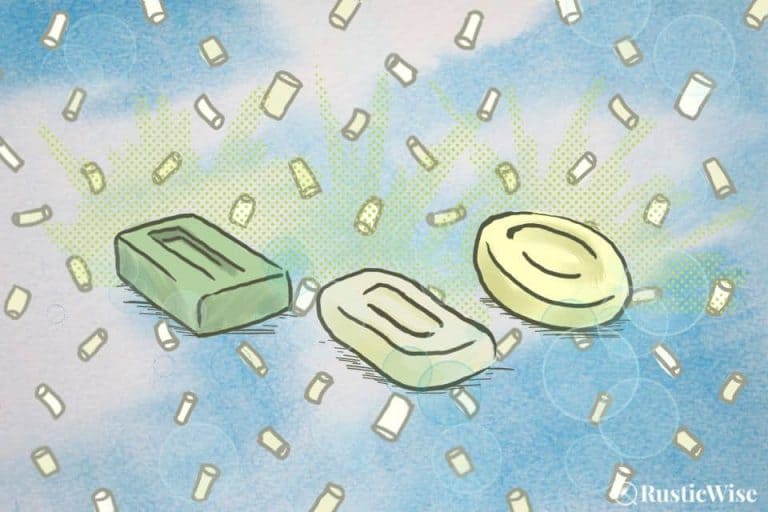7 Amazing Benefits of Exfoliating Skin + Easy Sugar Scrub Recipe
For a healthy skin care routine, most of us have the cleansing and moisturizing parts down pat. But let’s not forget the importance of exfoliation.
There are many benefits of exfoliating skin. When we remove the top layer of dead skin cells, we’re left with a more radiant complexion. The act of exfoliation also helps to promote a more even and clear skin tone, and stimulates collagen synthesis (which reduces the appearance of wrinkles). Plus, it allows your moisturizers to penetrate the deeper layers of skin.
Let’s take a closer look at why you should exfoliate your body from head to toe, the main types of exfoliation, and ways to incorporate it into your self care routine.
Plus, we have an easy two-ingredient body sugar scrub recipe down below!
What is skin exfoliation, exactly?
Simply put, exfoliating your skin involves removing the top layer of dead skin cells to reveal fresh, new skin below.
A more scientific explanation of exfoliation from PubMed is, “Exfoliation, through chemical or physical means, is the process of removing excess corneocyte buildup, which in turn stimulates cell turnover, resulting in a more polished, smoother, translucent surface.”¹
A quick look at the 3 layers of skin
For a better understanding of how sloughing off excess skin cells works, let’s take a quick look at the skin’s three layers.²
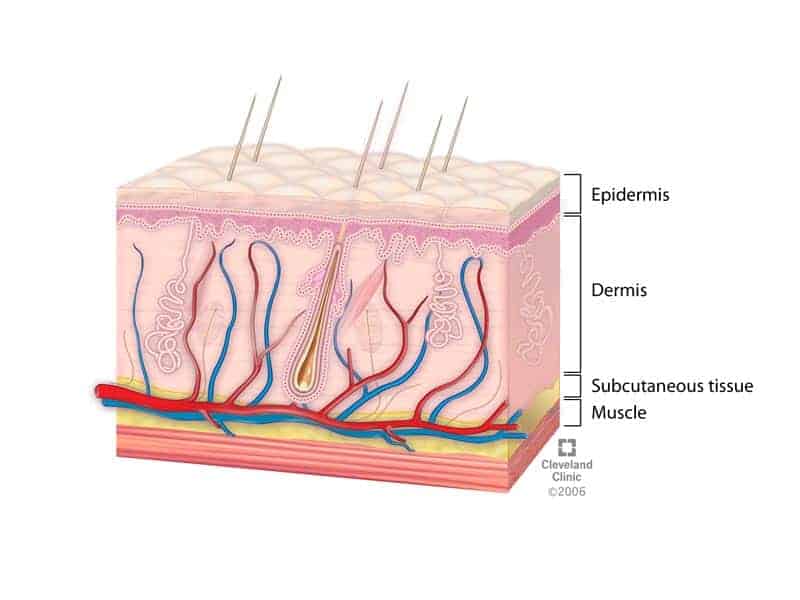
Credit: Cleveland Clinic
- Epidermis (the top layer): The outermost layer of skin acts as a protective barrier, keeping out harmful bacteria and protecting you from natural elements such as UV rays. This layer generates new skin cells.
- Dermis (the middle layer): The thickest middle layer is the area that contains collagen and elastin, which keeps skin pliable. This layer grows hair and produces oil and sweat. It also contains blood vessels to supply nutrients to the epidermis.
- Hypodermis (the bottom/fatty layer): This fatty layer acts as a cushion between your bones and muscles. It contains many important connective tissues.
Fun fact: The epidermis works hard to regenerate new skin cells. Every day, the average person sheds roughly 40,000 old skin cells. That means that in about 30 days, you have new skin!²
Benefits of exfoliating from head to toe
From your scalp to your feet, here are the reasons you should exfoliate regularly.
How often one should scrub is a common question. While there’s no standard answer, it’s best to adjust your routine to your skin type. We have listed general guidelines for how often to exfoliate for each.
Remember to moisturize afterwards!
- Benefits of exfoliating scalp: Scrub away dry flakes and hair product buildup on your scalp by using either a scalp massaging tool (such as a wet brush), or an exfoliating product with salicylic or glycolic acid. This helps boost healthy, shiny hair. Start by doing this once a week at first. You can bump up the frequency to twice a week if you have scalp concerns, such as dandruff.³
- Benefits of exfoliating face: Enhance your skin’s natural glow factor with routine exfoliation using either physical scrubbers or chemical exfoliants. There are many benefits of facial scrubs, including fewer blackheads/whiteheads, more even skin tone, and fewer wrinkles. (We’ll go into more detail about benefits of scrubbing your face in the section below!)
- Benefits of exfoliating lips: Remove dry, flaky skin from that kisser for a smoother and softer pout. Natural sugar scrubs work wonders. Do this once a week.
- Benefits of exfoliating body: Just as our faces develop a buildup of dead skin cells, the rest of our body also benefits from a gentle scrub. Regular body exfoliation helps to smooth rough patches (especially on knees and elbows), reduce razor bumps, and promote more supple skin. There are various ways to do this, from exfoliating gloves, exfoliating soap, or a simple body scrub with sugar, sea salt, or coffee grounds. Use a body scrub to exfoliate once or twice a week.
- Benefits of exfoliating feet: Our feet do the heavy lifting and are prone to developing callouses, flaky skin, and cracked heels. Exfoliating feet promotes healthier skin growth, prevents clogged pores, and improves circulation. If you have very dry skin prone to calluses, use a pumice stone or similar type of scrubber once or twice a week. Others with normal skin may only need to do this every 2 weeks.
Main types of exfoliants
The results are the same—glowing skin. But there are different ways to achieve this. Here are the two most common ways to exfoliate at home.
1. Physical exfoliants
Also called mechanical exfoliating, this category of scrubbers involves the act of physically rubbing a gentle abrasive cleanser, or abrasive material on the skin to remove dead skin cells on the top layer of skin.
A few examples of physical exfoliation include:
- Face and body scrubs
- Loofahs
- Facecloths
- Pumice stones (feet)
- Exfoliating gloves
- Exfoliating bar soap or body wash
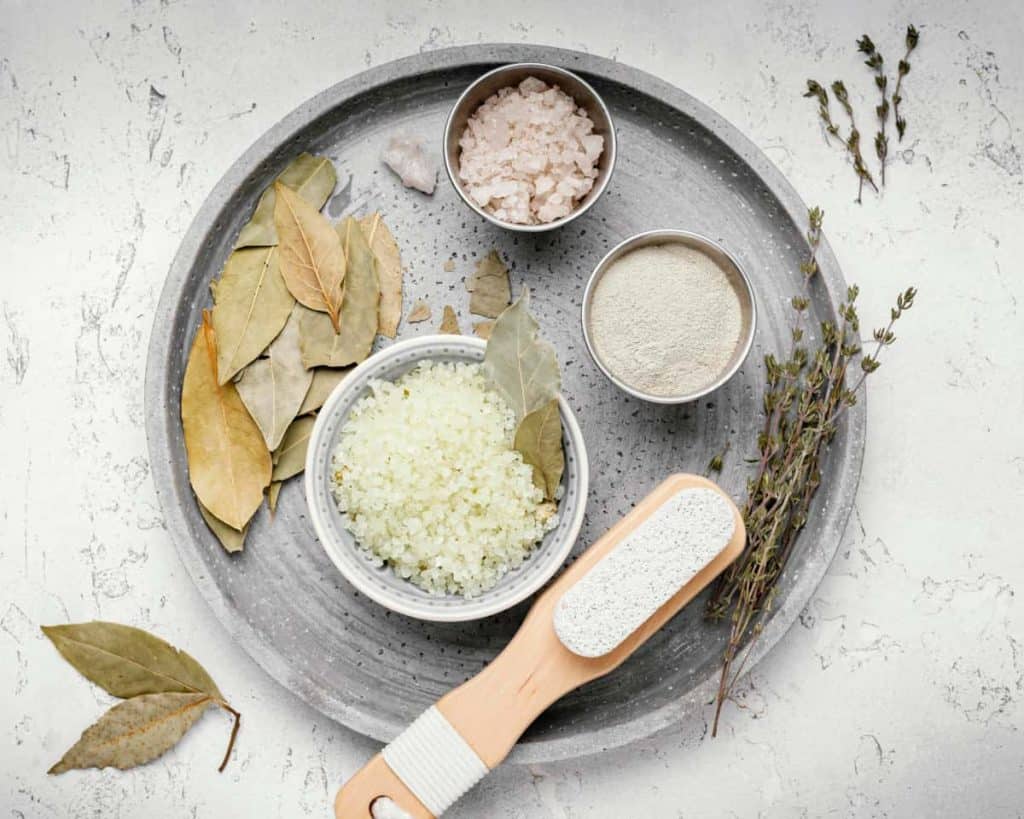
Credit: Vector State
2. Chemical exfoliation
Chemical exfoliants use acids to dissolve or clear away dead cells—no physical scrubbing required. Sometimes these substances are called chemical peels.
While these products may sound harsh, these acids are pain free. Some people may experience mild tingling. Those with sensitive skin should do a small patch test first.
You’ve probably heard of hydroxy acids (HAs) which are widely used in skin care products. These are fruit acids known for their skin rejuvenating effects. There are two main types of HAs:
- Alpha Hydroxy Acid (AHA): AHAs work on the epidermis and dermis to promote more youthful skin from the inside out. These water-soluble acids work to minimize acne, scars, skin pigmentation, dryness, and wrinkles. Citric acid, glycolic acid, and lactic acid are common AHAs.⁴
- Beta Hydroxy Acid (BHA): These fat-soluble acids work to penetrate deep into the skin to help with acne. A common BHA is salicylic acid, which is ideal for those with oily or acne-prone skin types.⁴
A few examples of chemical exfoliants include:
- Facial serums
- Toners
- Facial cleansers
- Chemical peels
Tip: When using chemical exfoliants, protect yourself from the sun. AHAs and BHAs make your skin more sun-sensitive.
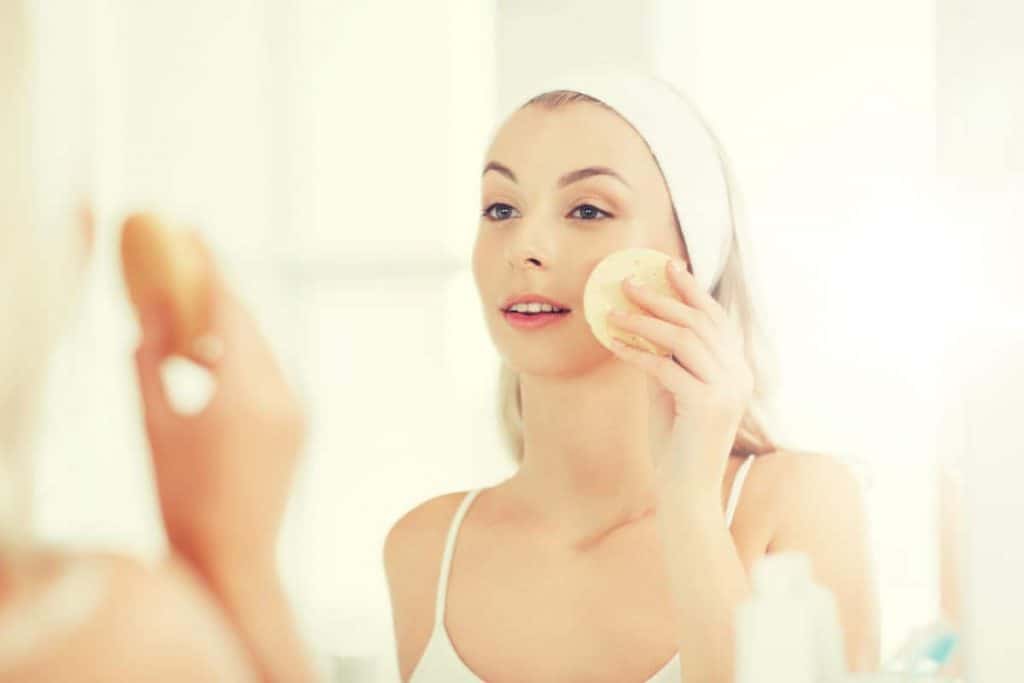
7 Benefits of exfoliating your face
We all want to put our best face forward, and removing dead cells can help do just that. Our visage is front and center, so let’s take an in-depth look at the benefits of gentle exfoliants for the face.
1. Promotes clearer skin
When you don’t remove cell buildup on the epidermis, you get clogged pores. This leads to the development of blackheads and whiteheads. With regular exfoliation, you’ll benefit from clearer skin.
Left untreated, acne can result. The best ways to prevent blackheads and whiteheads from developing is to keep the epidermis clear of dead cells.
Consider using a facial scrub. Find one that is gentle enough to use regularly. If you are considering a scrub, look for one that is oil-free and contains salicylic acid or glycolic acid. These ingredients will help to gently remove dead skin cells and impurities.
2. Promotes a healthy glow
Who doesn’t want a natural, healthier complexion? Once the top layer of rough, flaky, or dry skin is gone, you’re left with a more even and smooth texture.
Your face will not only look more radiant, it’ll also feel softer and more supple.
3. Promotes more youthful skin
As we age, the epidermis becomes thinner, while the stratum corneum layer (which forms the top layer of the epidermis) gets thicker. This results in more papery skin with a duller appearance.⁴
Luckily, AHAs are powerful anti-aging ingredients that minimize the appearance of wrinkles and stimulate collagen synthesis.⁴
When collagen levels increase, you’re left with fewer wrinkles, firmer skin, and an overall younger looking appearance. Alpha hydroxy acids have also been found to lighten age spots.⁴
4. May reduce acne
Clogged pores are one of the leading causes of acne. By regularly sloughing off dead cells and removing oil, dirt, and impurities using either a chemical or physical exfoliator, you may help prevent acne.
Reduce breakouts by using non-comedogenic facial cleansers and exfoliators.
Chemical exfoliants, in particular, may help to minimize acne. AHAs may help to reduce the appearance of blemishes. Salicylic acid, a BHA, is an effective anti-inflammatory which penetrates deep down through the sebaceous follicles. It’s effective, yet milder than AHAs for those with sensitive and acne-prone skin.
5. Primes the skin for makeup
Just as you wouldn’t paint a wall without first scraping off bumps and dirt from the surface, you shouldn’t apply makeup onto an uneven surface (your skin!).
Once your visage is cleansed, exfoliated, and moisturized, your makeup will glide on more easily for a flawless finish.
After all, a smoother canvas is easier to use.
6. Allows skin care products to penetrate deep into skin
Cell buildup on the epidermis acts as a barrier preventing facial toners, creams, cleansers, and serums from penetrating deep into skin.
By clearing the skin’s surface of impurities, your skin care products will be more effective.
Products containing alpha hydroxy acids penetrate deep into the skin to replenish moisture. AHAs also boosts the subcutaneous barrier function (the deepest layer of skin which helps to protect organs and regulate body temperature).⁴
7. Boosts circulation
When you apply physical facial scrubs in a gentle, circular motion, you increase blood flow to the skin. This boost to the circulatory system also helps to rid the body of toxins, resulting in a radiant, and naturally rosy complexion.
Skin exfoliating tips
More is not always better when it comes to scrubbing the epidermis. When improperly used, exfoliating tools, scrubs, and serums may do more harm than good.
According to the American Academy of Dermatology Association (AAD), tread gently when you begin your exfoliating routine. It’s best to tailor the method of exfoliation to your skin type.⁵
For example, if you have sensitive or dry skin, or acne-prone skin, stick to using a mild chemical exfoliator and a facecloth as facial scrubs may prove too irritating.⁵
Those with oily skin may prefer to use mechanical exfoliation or more potent chemical peels.⁵
Start by using a physical exfoliant once or twice a week. Chemical exfoliants (depending on the strength and your skin type) can be used once a day. But listen to your skin. If your skin shows redness, or tenderness after exfoliating, cut back on your usage.⁵
Here are a few tips to get the most of this skin care routine.
- Go easy when exfoliating: You don’t want to scrub your skin raw, or create tears! Apply physical exfoliants onto skin in a circular motion.
- Follow the instructions: For best results, follow the directions on the label. If your chemical exfoliator says to leave it on for 20 minutes, do so!
- Cleanse, exfoliate, then moisturize: Follow these three steps in order to a healthy glow. Start by using a cleanser before you move to step two, exfoliation. Once you’ve applied your exfoliator, don’t forget to moisturize the skin.
- Keep it lukewarm: After applying a physical facial scrub, rinse well with lukewarm, not hot water. Hot water may irritate the skin.
- Avoid using on damaged skin: Avoid exfoliating on skin cuts, or sunburned skin.
Natural exfoliants
While there are plenty of commercial scrubs and peels available, there are also plenty of natural ingredients you may already have at home.
Tip: When using anything on your face, ensure the ingredients are finely ground, are free of any sharp edges. Face scrubs should be less abrasive than scrubs you would use on the body.
Here are some exfoliating additives you can use for making your own DIY scrubs, body washes, creams, or lotions.
You can also make your own exfoliating bar soap. For adding your own natural exfoliants to your next batch of homemade soap, add about 1 teaspoon per pound of soap.
Here are some natural additives that scrub and clear skin:
- Sugar (granulated sugar or brown sugar)
- Coffee grounds (coarsely ground for body, more finely ground for face)
- Salt
- Ground oats
- Seeds such as poppy, raspberry, and cranberry seeds (generally used for body, not face)
- Vanilla bean powder
- Bamboo sap powder
- Ground pumice (for feet)
- Sand (for feet)
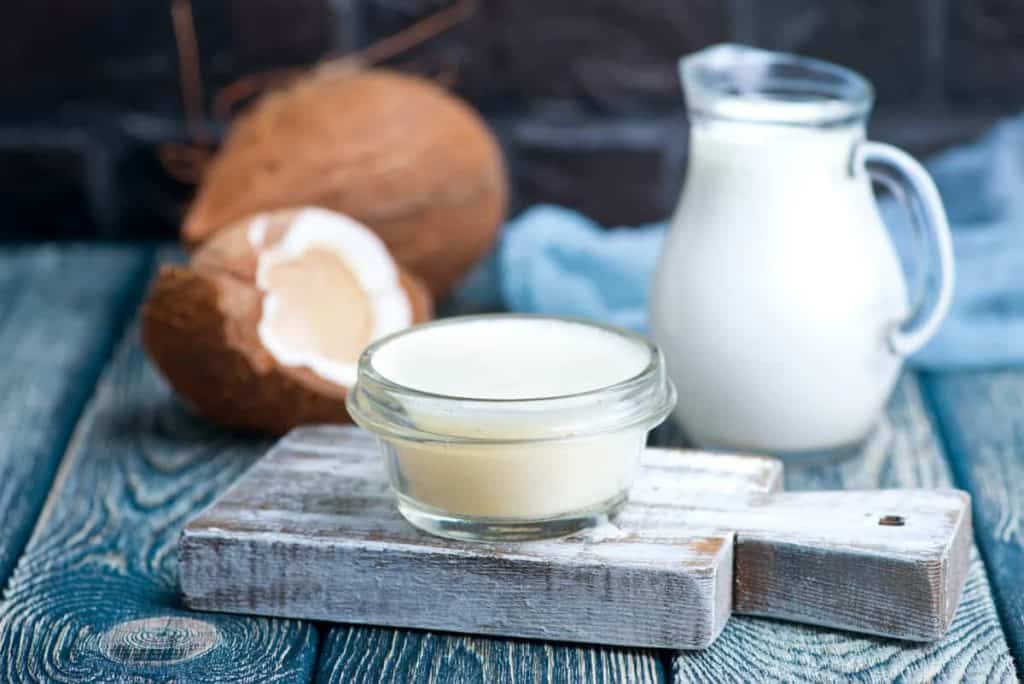
Credit: Vector State
DIY sugar scrub recipe
This simple body scrub is perfect for sloughing off dead skin from elbows, knees, and the bottoms of feet. I wouldn’t use it on your face as sugar may be too abrasive.
This easy DIY body scrub uses only two ingredients: coconut oil and sugar! The ratio is two parts sugar to one part coconut oil, so you can adjust the recipe as needed.
Coconut oil is rich in vitamin E and is also antibacterial and anti-inflammatory to boot.
You can use both refined or unrefined coconut oil. Unrefined will lend a lovely coconut aroma. When making skin care products, it’s best to stick with organic oils if possible.
You can use either brown sugar (finer) or granulated sugar (coarser).
You’ll need:
- 1 cup sugar (brown or granulated work fine; or try mixing both)
- ½ cup coconut oil
- Mixing bowl and spoon
- Storage container such as a glass jar
- In a mixing bowl, combine the sugar with the coconut oil until well incorporated.
- Transfer the mixture to a storage container.
Keep a small spoon or wooden popsicle stick to scoop out the scrub and to prevent contamination. To use, simply rub onto moistened skin for several seconds. Let the mixture sit for a minute to let the nutrients of the coconut oil to absorb into the skin. Rinse clean.
Would you like more timeless tips via email?
Fun tips to help you live an independent, self-sustaining lifestyle. Opt-out at any time.


References
- Rodan, K., Fields, K., Majewski, G., & Falla, T. (2016). Skincare Bootcamp: The Evolving Role of Skincare. Plastic and reconstructive surgery. Global open, 4(12 Suppl Anatomy and Safety in Cosmetic Medicine: Cosmetic Bootcamp), e1152. https://doi.org/10.1097/GOX.0000000000001152
- Cleveland Clinic, Skin, https://my.clevelandclinic.org/health/articles/10978-skin. Accessed June 2022.
- Rivas, Genesis (21 October 2021). “Why You Should Exfoliate Your Scalp, According to Experts,” Real Simple. Accessed June 2022.
- Moghimipour E. (2012). Hydroxy Acids, the Most Widely Used Anti-aging Agents. Jundishapur journal of natural pharmaceutical products, 7(1), 9–10.
- American Academy of Dermatology Association, How To Safely Exfoliate at Home, https://www.aad.org/public/everyday-care/skin-care-secrets/routine/safely-exfoliate-at-home. Accessed June 2022.

Author: Theresa Tesolin
Theresa is co-founder of RusticWise. She helps people unleash their inner DIY spirit by encouraging them to get dirty and make or grow something from scratch.

